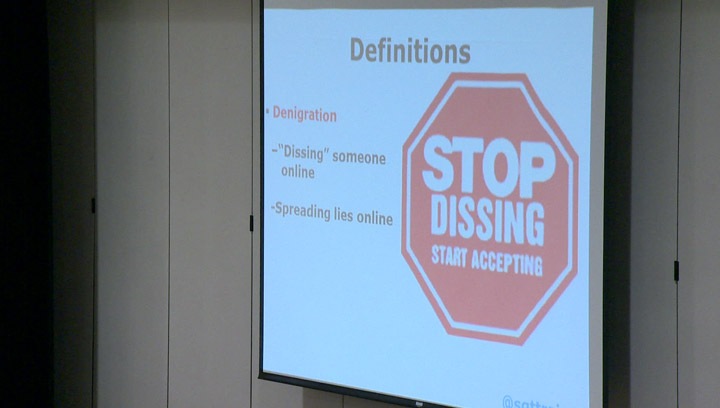In this three-part series, I’ll talk about what cyberbullying is, cyberbullying in Canada, and how to support Canadian children and teens online.

“We all know the awful humiliation of a person laughing at you. But that feeling increases tenfold when it seems like everyone is laughing at you. Scrolling through the comments, the world imploded — and took my heart with it.”
– Caitlin Seida (salon.com)
Caitlin Seida wrote a piece for Salon.com earlier this year entitled, My Embarrassing Picture Went Viral in which she described her experience when someone copied a photo from her Facebook page and posted it to various websites with the intention of mocking her. Seida felt humiliated, but with support from a friend, she took control of the situation. She called people out on their mean comments and sent copyright violation and take down notices to the websites hosting the posts of her picture. She changed her privacy settings on her own social media account and has become an advocate for other people whose photos get passed around as hers did.
Stories like Seida’s strike a chord among many of us and remind us that no one deserves this abuse. The repeated nature of the abuse she experienced is critical to the definition of cyberbullying.
Bullying is defined by:
1) Unwanted aggression,
2) Real or perceived power difference between the person(s) bullying and the person(s) victimized,
3) Repetition, or the likelihood of repetition, and
4) Negative impact on the person who is victimized
These features also define cyberbullying. The public nature of cyberbullying contributes to the repeated nature and impact of the victimization. Every time a picture is re-posted, someone comments on that post, or when the person victimized has to ask to have a post removed, the person is revictimized.
Cyberbullying can take many forms, and the ever-evolving nature of technology means that the list of examples of cyberbullying is always changing. Here are just a few:
- Using technology (email, social networking sites, texts, etc.) to spread cruel and sometimes threatening messages directly to a person.
- Using technology to spread photos, messages, gossip, secrets, or rumours about another person that will damage that person’s reputation.
- Breaking into an email account or social networking site and sending hurtful materials to others under an assumed identity or changing their profile to reflect sexual, racist and other content that may offend others.
- Creating blogs, websites or polls that have stories, cartoons, pictures or jokes ridiculing others.
- Deliberately excluding others from instant messaging and email contact lists in order to hurt, embarrass, or alienate them.
In any of these behaviours, there is a difference in power between the people involved. The person victimized feels powerless against the viral nature of some of these acts and is made to feel powerless through the abuse.
Cyberbullying may often be distinguished from traditional (e.g., verbal, social, physical) bullying, but there is much overlap between them:
– Both occur in the context of social relationships and
– Both often occur in the presence of witnesses.
A good understanding of cyberbullying is crucial to exploring the issue further. In the next installment of this series I’ll talk about cyberbullying and cyber-victimization for Canadian children and youth.In the last part of the series I’ll present some ideas about socializing children and youth in an online world.




Comments